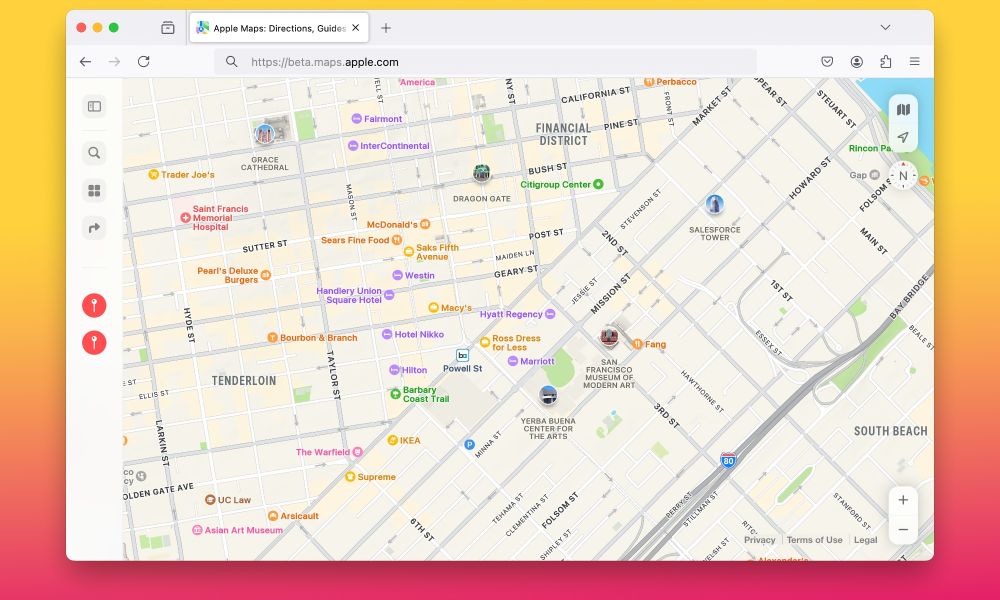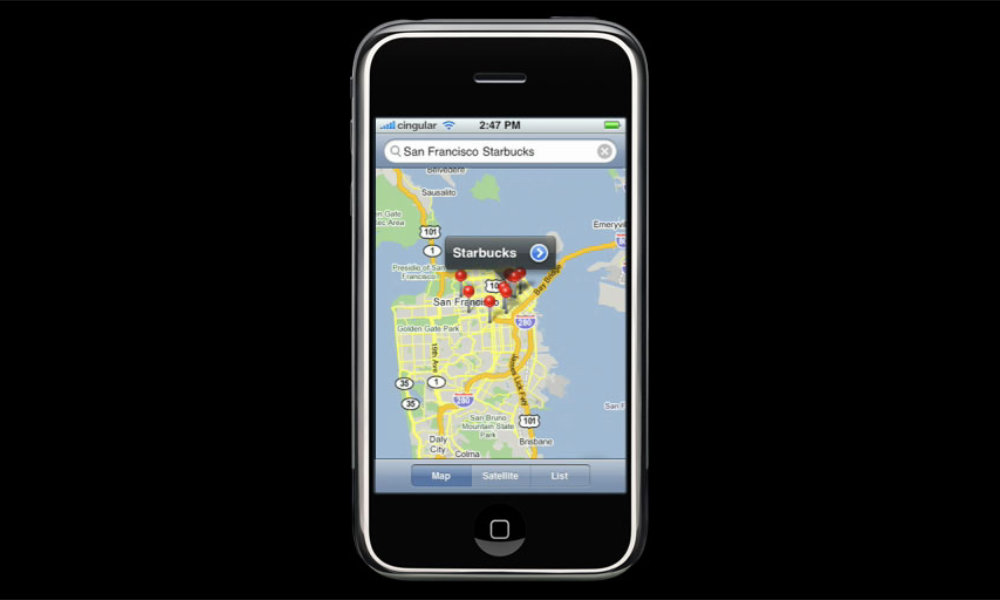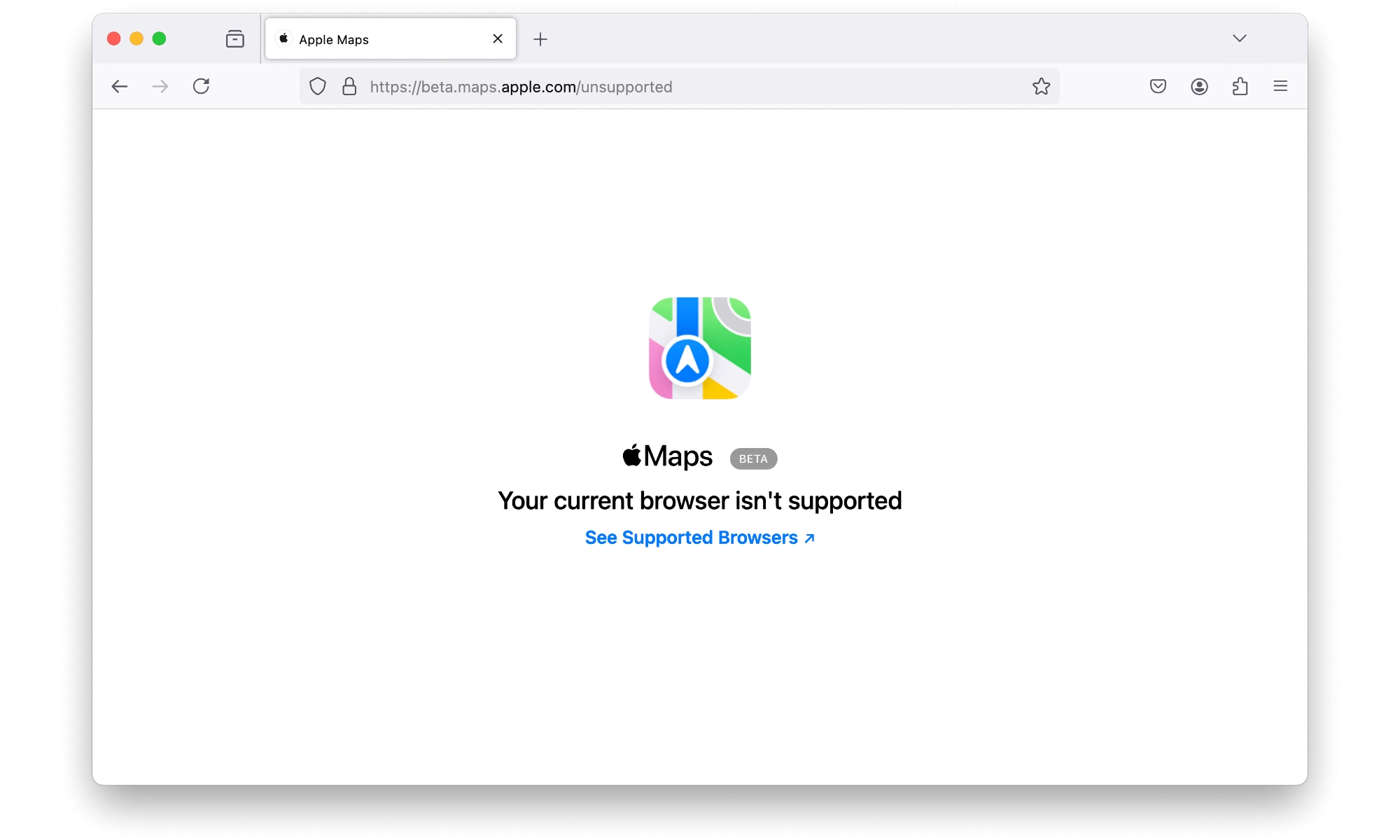Apple Maps Comes to More Browsers

Toggle Dark Mode
It’s only been a little over two weeks since Apple brought Apple Maps to the web, and it’s already expanding support to reach a more complete suite of modern browsers.
Although Apple Maps launched over a decade ago, it has remained largely an app-only affair. Developers have been able to incorporate Apple Maps into their websites for a while now, and DuckDuckGo provides search results in Apple Maps, but for everyday access, you’ve needed an iPhone, iPad, or Mac with the corresponding Apple Maps app.
This was pretty much the opposite approach of Google Maps, which began its life as a web-based app in 2005 — two years before the iPhone arrived on the scene. Ironically, it was the iPhone that first brought Google Maps into the mobile mainstream via the Apple Maps app, which relied on Google for its data for five years until Apple decided to launch its own mapping service with iOS 6 in 2012 (Google had a limited J2ME version of its Maps app before that, but the first native apps for Symbian and Windows Mobile didn’t land until later in 2007, and Android as a platform didn’t exist until 2008).
However, when Apple Maps (the app) switched to Apple Maps (the platform), it omitted one key feature that had made Google Maps so useful — a version accessible from any web browser. This limited its mapping platform to the Apple ecosystem, leaving iPhone-toting Windows users with nothing to turn to on the desktop except Google Maps. This also meant many chose to use Google Maps on the iPhone for a consistent cross-platform experience.
That finally changed last month when Apple announced a web-based version of Apple Maps, allowing access from any browser, just like Google Maps. Unfortunately, the initial browser support was limited to Safari and Chrome on the Mac and iPad and Chrome and Edge on Windows PCs. Others, like Firefox, were left out of the party, and it wasn’t a matter of them merely being buggy — they were explicitly blocked as unsupported.
Although Apple promised to support more browsers “over time,” that vague statement left us guessing when that would happen.
Thankfully, Apple is moving pretty fast on this one. Yesterday, it quietly added Firefox to the list, along with Microsoft Edge for Mac. Since the Windows version was already supported from the start, it’s a bit of a mystery why Edge for Mac took longer to arrive. However, it may have been to ensure the iPad version of the browser was also ready since Apple Maps works in Safari and Chrome on Apple’s tablet — and Firefox too, now.

This iPad support doesn’t extend to the iPhone, although that’s not a huge loss as the Maps app provides a much better experience there. However, the lack of mobile support also means there’s no Android support, and you won’t find a native Apple Maps app for Android.
Apple Maps for the web is still technically in beta. Apple hasn’t yet added all the functionality offered by the full app. You won’t get turn-by-turn navigation, although you can get directions between two locations, and guides, business information, and reviews are all there, and you can even click on buttons to do things like ordering food or purchasing tickets. Look Around is the most conspicuously absent feature, but Apple has said it’s working on bringing that to the browser version over the next few months, along with support for languages beyond English.









